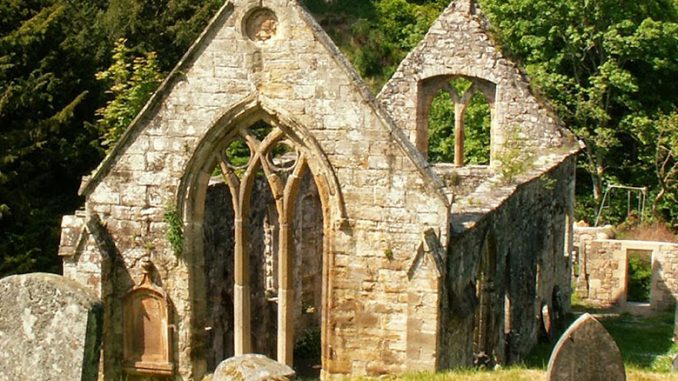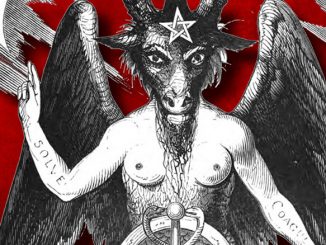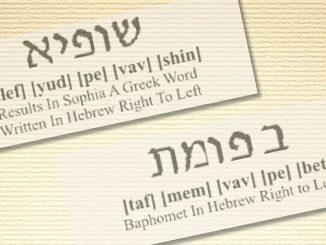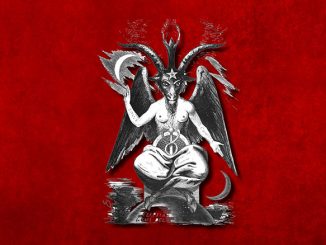
Publisher’s Note: Many of the writings of early Masonic historians took considerable liberties with Templar History, connecting their lineage to the Freemasons. As such, we present this information on the Templars and Freemasonry in Scotland as a record of what was considered historic in the past. The reader should take some caution as to the authenticity.
Templars and Freemasonry in Scotland – From The History of Freemasonry by Albert Mackey, 1898
The story, which connects the Knights Templars and Freemasonry in Scotland, after their return from the Crusades and after the suppression of their Order, forms one of the most interesting and romantic legends connected with the history of Freemasonry. In its incidents the elements of history and tradition are so mingled that it is with difficulty that they can be satisfactorily separated. While there are some writers of reputation who accept everything that has been said concerning the connection in the 14th century of the Freemasons of Scotland with the Templars who were then in that kingdom, or who escaped to it as an asylum from the persecutions of the French monarch, as an authentic narrative of events which had actually occurred, there are others who reject the whole as a myth or fable, which has no support in history.
Here, as in most other cases, the middle course appears to be the safest. While there are some portions of the story, which are corroborated by historical records, there are others, which certainly are without the benefit of such evidence.
In the present chapter I shall endeavor, by a careful and impartial analysis, to separate the conflicting elements and to dissever the historical from the legendary or purely traditional portions of the relation. But it will be necessary, in clearing the way for any faithful investigation of the subject to glance briefly at the history of those events, which were connected with the suppression of the ancient Order of Knights Templars in France in the beginning of the 14th century.
The Templars, on leaving the Holy Land, upon the disastrous termination of the last Crusade and the fall of Acre, had taken temporary refuge in the island of Cyprus. After some vain attempts to regain a footing in Palestine and to renew their contests with the infidels, who were now in complete possession of that country, the Knights had retired from Cyprus and repaired to their different Commanderies in Europe, among which those in France were the most wealthy and the most numerous.
At this period Philip IV, known in history by the sobriquet of Philip the Fair, reigned on the French throne, and Clement V. was the Pontiff of the Roman Church. Never before had the crown or the tiara been worn by a more avaricious King or a more treacherous Pope. Clement, when Bishop of Bordeaux, had secured the influence of the French monarch toward his election to the papacy by engaging himself by an oath on the sacrament to perform six conditions imposed upon him by the king, the last of which was reserved as a secret until after his coronation.
This last condition bound him to the extermination of the Templars, an order of whose power Philip was envious and for whose wealth he was avaricious. Pope Clement, who had removed his residence from Rome to Poictiers, summoned the heads of the military orders to appear before him for the purpose, as he deceitfully pretended, of concerting measures for the inauguration of a new Crusade. James de Molay, the Grand Master of the Templars, accordingly, repaired to the papal court. While there the King of France preferred a series of charges against the Order, upon which he demanded its suppression and the punishment of its leaders.
The events that subsequently occurred have been well called a black page in the history of the order.
On the 13th of October, 1307, the Grand Master and one hundred and thirty-nine Knights were arrested in the palace of the Temple, at Paris, and similar arrests were on the same day made in various parts of France. The arrested Templars were thrown into prison and loaded with chains. They were not provided with a sufficiency of food and were refused the consolations of religion. Twenty-six princes and nobles of the court of France appeared as their accusers; and before the judgment of their guilt had been determined by the tribunals, the infamous Pope Clement launched a bull of excommunication against all persons who should give the Templars aid or comfort.
The trials, which ensued, were worse than a farce, only because of their tragic termination. The rack and the torture were unsparingly applied. Those who continued firm in a denial of guilt were condemned either to perpetual imprisonment or to the stake. Addison (editors note: Charles Addison was another author writing about the Templars in the 1800’s ) says that one hundred and thirteen were burnt in Paris and others in Lorraine, in Normandy, at Carcassonne, and at Senlis.
The last scene of the tragedy was enacted on the 11th of March, 1314. James de Molay, the Grand Master of the order, after a close and painful imprisonment of six years and a half, was publicly burnt in front of the Cathedral of Notre Dame, in Paris.
The order was thus totally suppressed in France and its possessions confiscated. The other monarchs of Europe followed the example of the King of France in abolishing the Order in their dominions; but, in a more merciful spirit, they refrained from inflicting capital punishment upon the Knights.
Outside of France, in all the other kingdoms of Europe, not a Templar was condemned to death. The order was, however, everywhere suppressed, and a spoil made of its vast possessions, notwithstanding that in every country beyond the influence of the Pope and the King of France its general innocence was sustained. In Portugal it changed its name to that of the Knights of Christ – everywhere else the Order ceased to exist.
But there are writers who, like Burnes, (1) maintain that the persecution of the Templars in the 14th century did not close the history of the order, but that there has been a succession of Knights Templars from the 12th century down to these days.
Dr. Burnes alluded to the Order of the Temple and the pretended transmission of the powers of de Molay to Larmenius.
With this question and with the authenticity of the so-called “Charter of Transmission,” the topic which we are now about to discuss has no connection, and I shall therefore make no further allusion to it.
It is evident from the influence of natural causes, without the necessity of any historical proof, that after the death of the Grand Master and the sanguinary persecution and suppression of the Order in France, many of the Knights must have sought safety by flight to other countries. It is to their acts in Scotland that we are now to direct our attention.
There are two Legends in existence, which relate to the connection of Templarism with the Freemasonry of Scotland, each of which will require our separate attention.
The first may be called the Legend of Bruce, and the other the Legend of D’Aumont.
In Scotland the possessions of the order were very extensive. Their Preceptories were scattered in various parts of the country. A papal inquisition was held at Holyrood in 1309 to try and, of course, to condemn the Templars. At this inquisition only two knights, Walter de Clifton, Grand Preceptor of Scotland, and William de Middleton appeared. The others absconded, and as Robert Bruce was then marching to meet and repel the invasion of King Edward of England, the Templars are said to have joined the army of the Scottish monarch.
Thus far the various versions of the Bruce Legend agree, but in the subsequent details there are irreconcilable differences.
According to one version, the Templars distinguished themselves at the Battle of Bannockburn, which was fought on St. John the Baptist’s Day, 1314, and after the battle a new order was formed called the Royal Order of Scotland, into which the Templars were admitted. But Oliver thinks very justly that the two Orders were unconnected with each other.
Thory says that Robert Bruce, King of Scotland under the title of Robert I., created on the 24th of June, 1314, after the Battle of Bannockburn, the Order of St. Andrew of the Thistle, to which was afterward added that of Heredom, for the sake of the Scottish Masons, who had made a part of the thirty thousand men who had fought with an hundred thousand English soldiers. He reserved for himself and his successors the title of Grand Master and founded at Kilwinning the Grand Lodge of the Royal Order of Heredom. (2) The Manual of the Order of the Temple says that the Templars, at the instigation of Robert Bruce, ranged themselves under the banners of this new Order, whose initiations were based on those of the Templars. For this apostasy they were excommunicated by John Mark Larmenius, who is claimed to have been the legitimate successor of de Molay. (3)
None of these statements are susceptible of historical proof of Templars and Freemasonry in Scotland.
The Order of Knights of St. Andrew or of the Thistle was not created by Bruce in 1314, but by James II. in 1440.
There is no evidence that the Templars ever made a part of the Royal Order of Heredom. At this day the two are entirely distinct. Nor is it now considered as a fact that the Royal Order was established by Bruce after the Battle of Bannockburn, although such is the esoteric legend. On the contrary, it is supposed to have been the fabrication of Michael Ramsay in the 18th century. On this subject the remarks of Bro. Lyon, who has made the Masonry of Scotland his especial study, are well worth citation.
“The ritual of the Royal Order of Scotland embraces,” he says, “what may be termed a spiritualization of the supposed symbols and ceremonies of the Christian architects and builders of primitive times, and so closely associates the sword with the trowel as to lead to the second degree being denominated an order of Masonic knighthood, which its recipients are asked to believe was first conferred on the field of Bannockburn, as a reward for the valor that had been displayed by a body of Templars who aided Bruce in that memorable victory; and that afterward a Grand Lodge of the Order was established by the King at Kilwinning, with the reservation of the office of Grand Master to him and his successors on the Scottish throne. It is further asserted that the Royal Order and the Masonic Fraternity of Kilwinning were governed by the same head. As regards the claims to antiquity, and a royal origin that are advanced in favour of this rite, it is proper to say that modern inquiries have shown these to be purely fabulous. The credence that is given to that part of the legend which associates the Order with the ancient Lodge of Kilwinning is based on the assumed certainty that Lodge possessed in former times a knowledge of other degrees of Masonry than those of St. John. But such is not the case. The fraternity of Kilwinning never at any period practiced or acknowledged other than the Craft degrees; neither does there exist any tradition worthy of the name, local or national, nor has any authentic document yet been discovered that can in the remotest degree be held to identify Robert Bruce with the holding of Masonic Courts, or the institution of a secret society at Kilwinning.” (4)
After such a statement made by a writer who from his position and opportunities as a Scottish Mason was better enabled to discover proofs, if there were any to be discovered, we may safely conclude that the Bruce and Bannockburn Legend of Scottish Templarism is to be deemed a pure myth, without the slightest historical clement to sustain it.
There is another Legend connecting the Templars in Scotland with Freemasonry, which demands our attention.
It is said in this Legend that in order to escape from the persecution that followed the suppression of the order by the King of France, a certain Templar, named D’Aumont, accompanied by seven others, disguised as mechanics or Operative Masons, fled into Scotland and there secretly founded another order; and to preserve as much as possible the ancient name of Templars as well as to retain the remembrance of and to do honor to the Masons in whose clothing they had disguised themselves when they fled, they adopted the name of Masons in connection with the word Franc, and called themselves Franc Masons. This they did because the old Templars were for the most part Frenchmen, and as the word Franc means both French and Free, when they established themselves in England they called themselves Freemasons. As the ancient order had been originally established for the purpose of rebuilding the Temple of Jerusalem, the new order maintained their bond of union and preserved the memory and the design of their predecessors by building symbolically spiritual Temples consecrated to Virtue, Truth, and Light, and to the honor of the Grand Architect of the Universe.
Such is the Legend as given by a writer in the Dutch Freemasons’ Almanac, from which it is cited in the London Freemasons’ Quarterly Review.
About Us
We hope you enjoyed this article on Templars and Freemasonry in Scotland.
TemplarHistory.com was started in the fall of 1997 by Stephen Dafoe, a Canadian author who has written several books on the Templars and related subjects.
Read more like Templars and Freemasonry in Scotland from our Templar History Archives – Templar History



